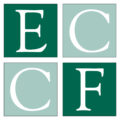
5 ways to maximize the value of assessments
Assessments are extremely popular and, when used correctly, they can provide a wealth of information to increase a leader’s self-awareness, highlight important strengths, and point to developmental opportunities.
Assessments ask a series of questions about an individual or a team. Respondents answer the questions about themselves, or sometimes about others as when using 360 assessments, and the results are tabulated and reported back to the subject of the assessment.
I talked about benefits of different types of assessments in an earlier post – To improve things, you have to measure them. There are a few things that both the organizations and individuals can do to make sure they reap the maximum benefit from their assessment dollars.
- Use rigorous and bona fide assessments. For instance, there is only one Myers Briggs Type Indicator (MBTI®). There are dozens of knock-offs available for low or no cost on the internet. But beware that you get what you pay for as the imposters are based on little, if any, science and provide little more value than a Cosmo quiz. Most reliable assessments protect their brand vigorously and require that their assessments be administered only by trained and qualified practitioners. You won’t find these high quality assessments for free on the internet.
- Use assessments only for development. Assessments point out things that people don’t always recognize on their own – that’s one of the great values! But people are less likely to be honest in answering the questions if they believe that the results will be used for something other than helping them see their strengths and blind spots. Assessment results are intended to be private. An ethical practitioner will not share results with anyone else in the company except the person being assessed.
- Allow time to understand the assessment framework and results. Don’t rush the process like a task to be completed. It’s important to first understand the foundation and meaning of an assessment, so provide a context within which to view our results. When scheduling assessments for an organization, plan sufficient time for the practitioner to explain the underpinning of the assessment. For certain types of assessments – 360 assessments come to mind – provide time for coaching on the back end to help the people being assessed understand not only their results, but what to DO with the results.
- Be open to the results. When you receive your assessment report, you may find some surprises. You may learn things about yourself that don’t mesh with what you have always believed or you may feel disappointed that the results aren’t different. It’s important to take in the information and to truly consider it. It’s tough because our egos get in the way, but the learning that you gain could very well set you on an path of action that changes your relationships, your influence, or your entire life. The first step is to be open.
- AND hold the results lightly. This sounds like a contradiction to #4. I DO want you to be open to the learning and increased self-awareness that can come from constructive input and feedback. But no one assessment is the ‘be all end all.’ Personality assessments can be a reflection of what you were doing and feeling the day that you answered the questions; maybe that’s not an accurate reflection of who you really are on a day to day basis. 360 assessments provide us with a snapshot of how other people interpret our behavior. And it’s all information.
That really is the point. Different assessments spotlight different aspects of our personalities and leadership. But whether we are examining emotional intelligence, team culture, conflict style, conversational norms, leadership behavior, or something else, a great assessment process gives us new information to consider and with that, the power to achieve different results with a new way of thinking.


